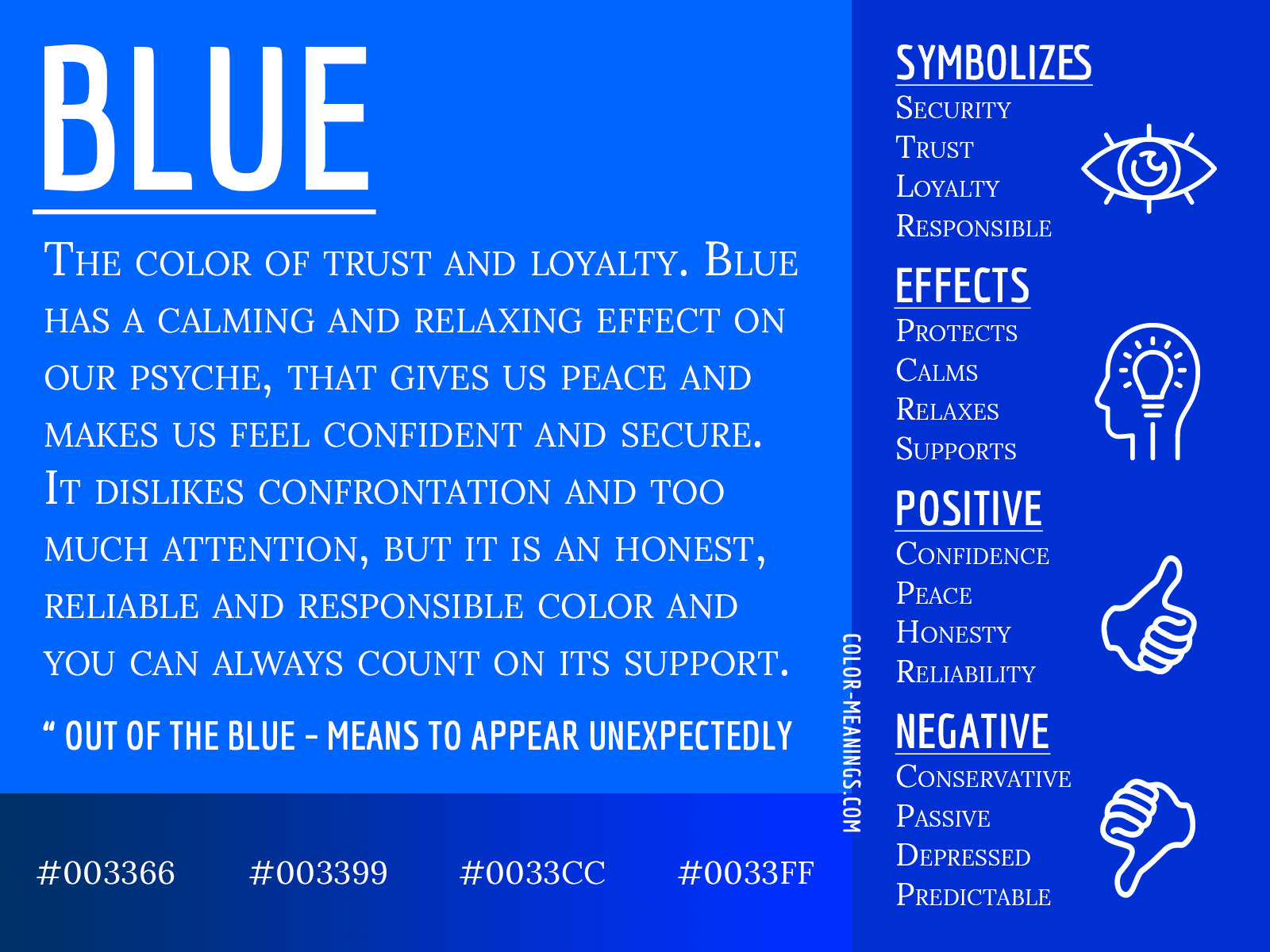
Blue is one of the most universally loved colors. It’s the color of the sky, the ocean, and the quiet moments in between. But beyond its visual appeal, blue carries deep psychological and cultural meaning. Understanding what blue symbolizes can help you use it more effectively in design, branding, fashion, and even in your daily life.
Let’s dive into the symbolism of blue and why it holds such a powerful place in our minds and emotions.
Psychological Associations: What Blue Symbolizes Emotionally
At its core, blue symbolizes calm, stability, and trust. Psychologists have long associated the color blue with feelings of peace and relaxation. It has the power to lower heart rates, slow breathing, and create a sense of tranquility—making it a go-to choice in environments like spas, healthcare facilities, and even bedrooms.
Blue is also the color of logic and communication. It’s often used in professional settings to encourage clear thinking and focus. This is one reason so many tech and corporate brands choose blue—it communicates reliability, intelligence, and confidence.
But not all blue emotions are positive. We can’t ignore phrases like “feeling blue” or “singing the blues.” In certain contexts, blue represents melancholy or emotional distance, making it a complex color full of dual meaning.
Cultural and Global Symbolism of Blue
Across different cultures, what blue symbolizes can vary, but many themes overlap.
-
Western cultures often see blue as a symbol of trust, security, and peace. It’s frequently used in uniforms, business suits, and political branding.
-
In Eastern cultures, blue can represent immortality, healing, and protection.
-
In religious symbolism, blue is associated with heaven, divinity, and spiritual depth—particularly in Christianity and Hinduism.
Blue is also found on many national flags, representing unity, justice, and liberty. From politics to religion, blue is a color that carries weight and dignity.
Blue in Branding and Marketing
When it comes to branding, blue is a top choice for companies that want to build trust and credibility. It’s not aggressive or flashy like red or orange; instead, it quietly suggests professionalism and calm authority.
Some major brands that use blue include:
-
Facebook
-
LinkedIn
-
PayPal
-
Ford
-
IBM
These companies rely on the subconscious feelings that blue evokes: security, intelligence, and dependability. Blue is especially popular in industries like tech, healthcare, finance, and government for exactly these reasons.
Different Shades, Different Messages
The symbolism of blue also depends heavily on the shade:
-
Light blue: Youthful, peaceful, friendly
-
Sky blue: Freedom, openness, inspiration
-
Navy blue: Power, tradition, professionalism
-
Teal and turquoise: Balance, creativity, emotional healing
Understanding these nuances can help you choose the right shade for the message you want to send.
Blue in Nature and Design
Nature shows us some of the most powerful expressions of blue—vast skies, deep oceans, icy landscapes. These natural associations make blue feel endless and expansive, inspiring reflection and calm.
In interior design, blue is used to create relaxing spaces. In digital and graphic design, it’s often used to encourage trust and guide the eye in a subtle, non-intrusive way.
Whether it’s the backdrop of a website or the color of your brand logo, blue can deeply influence how people feel when they interact with your content or space.
Final Thoughts on What Blue Symbolizes
So, what blue symbolizes is more than just a feeling—it’s a psychological and cultural force. It speaks of calm, clarity, trust, and depth. From ancient symbolism to modern branding, blue remains a color that connects with people on a deep, emotional level.
If you’re thinking about how to use blue in your life, brand, or creative projects, understanding its full meaning is the first step.
For more insights into color meanings and how they affect emotions and behavior, visit ColorPsychology.org — your go-to resource for understanding the language of color.